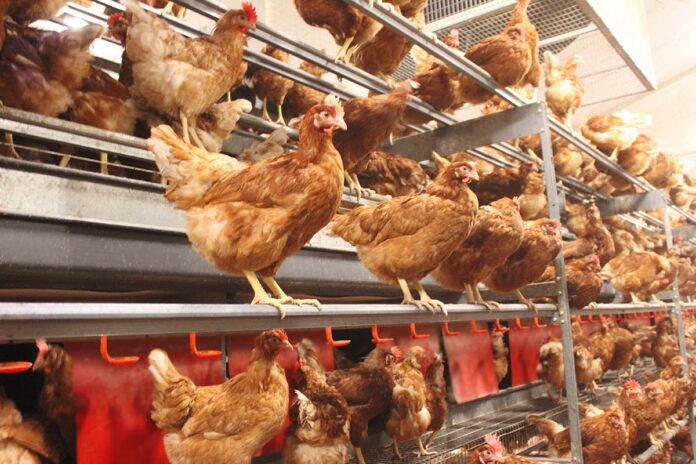
The study compared the impact of wire ramps and perches on meat chicken mobility and the incidence of detached femoral caps (DFC), which can be indicative of Bacterial chondronecrosis with osteomyelitis (BCO).
Bacterial chondronecrosis with osteomyelitis (BCO) is an infective leg condition that results in lameness, affecting meat chickens internationally. BCO can be induced using mechanical challenges such as wire ramps (Wideman, 2016). Based on a study wherein perches had a negative impact on bird latency to lie (LTL) at 42 days (d) old (Phibbs et al., 2020) perches may be a mechanical challenge to birds also, reducing their leg health in a similar way to Wideman’s ramps. This study compared the impact of wire ramps and perches on meat chicken mobility and the incidence of detached femoral caps (DFC), which can be indicative of BCO.
Day old Cobb-500 chicks were randomly allocated to one of three treatments: control, perch or wire ramp. Each treatment had six replicate pens, with 42 birds/pen (28kg/m2 stocking density at 42 d). One perch or ramp ran down the length of the pen between the feeders and drinkers, requiring the birds to pass over them to access food/water. Each wooden perch was 4.2 cm wide and 10 cm off the ground. Wire ramps were 10 cm high and 30 cm across, creating a 30° angle from the ground on both sides. Perches and ramps were added to pens at 7 d and remained throughout the 42 d study. Overall feed consumption and weight gain were measured.
Behavioural observations were made at five consistent time points every second day wherein all birds in the pen were categorised as either drinking, feeding, active or resting. Birds interacting with the ramps/perches were counted as either actively interacting (AI) when climbing/standing on them or passively interacting (PI) when perching. At 35 d, eight visually male birds were selected from each pen to undergo LTL, and then scored for hock burn (HB) and footpad dermatitis (FPD). At 42 d, seven different male birds were selected to undergo the same assessments, after which they were euthanased and assessed for DFC and FHN. Analysis to determine impact of treatment was performed using IBM SPSS Statistics version 24.
Perch and ramp use peaked at week 3, declining thereafter. Birds with access to the ramps were significantly more active than control birds (P=0.023) and the ramps induced significantly more AI and PI than the perches (P<0.001). Other activity categories were not affected. There was no effect of treatment on bird weight, FCR or LTL. When analysed against treatment, leg health observations were all insignificant except for HB at 35 d (P=0.002) and FPD at 42 d (P=0.002), which were both significantly more prevalent in birds with access to ramps. Perches were associated with a higher prevalence of DFC at 42 d (P=0.055).
There was some evidence that ramps had a negative impact on leg health, but not for observations typical of BCO, such as prevalence of DFC or reduced mobility. Higher prevalence of DFC in birds with access to perches gives some weight to the theory that perches may present a mechanical challenge to birds; however this is not clear-cut. In this study, perches and ramps differed in their effect on leg health and the impact of perches overall remains inconsistent across the literature (Groves & Muir, 2013; Phibbs et al., 2019, 2020).
Acknowledgement: D.V. Phibbs is the recipient of the 2017 RSPCA Australia Scholarship for Humane Animal Production Research.
References are available on request
From the Proceedings of the Australian Poultry Science Symposium 2020

















